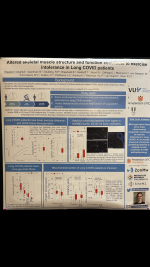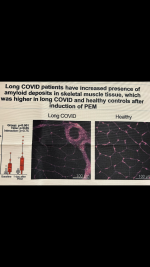JasonPerth
Senior Member
- Messages
- 139
https://x.com/resiapretorius/status/1696272269641764949?s=46&t=MKOhMke7DuglGcTS-Q6VQw
Link above:
Can anyone smarter then me provide more info.
Is this excactly what was expected as its excactly what we experience and feel with PEM and exercise with muscles just not working properly.
Is MECFS myopathy? Or a form of its own Myopathy?
Im confused
Link above:
Can anyone smarter then me provide more info.
Is this excactly what was expected as its excactly what we experience and feel with PEM and exercise with muscles just not working properly.
Is MECFS myopathy? Or a form of its own Myopathy?
Im confused




